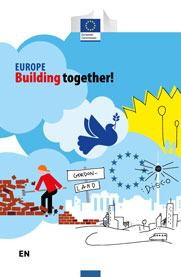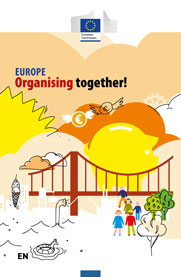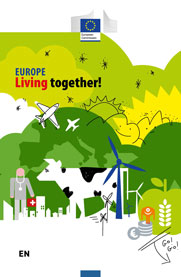
NOTE TO READERS
Our publisher tells us that some funny little drawings have appeared in our Europe – Better together! brochures. It seems that a boy called Gordon sneaked into the print shop and scribbled on some of the pages.
We hope they won’t bother you while you read.
Enjoy!
TEACHER’S GUIDE / AN EXPLANATORY LEAFLET
Europe Better together!
A tool to raise awareness about Europe for pupils over the age of 10
Europe — Better together! will help you to talk about Europe in class. The teaching kit contains three brochures and a map of the European Union.
Using the Europe — Better together! Teaching Kit in class
Depending on your interests and the questions from your pupils, you can choose to look at the European Union from three different angles. The brochures are not in any particular order. They complement one another but each of them can also be used as a stand-alone resource.
Our approach
We wanted to create a teaching environment that was both rich in content and full of fun to open young people’s eyes to their European future.
The main aim is to make pupils aware that they are part of the European Union and that they can shape the Europe of tomorrow. In order to emphasise their role, for each topic we have used an action verb
(living, organising, remembering, protecting, etc.).
The vocabulary, games and playful hints allow pupils to build up their knowledge themselves by following Gordon, the imaginary character who has scribbled on the brochures. The presence of a character who is
the same age as them makes the content more accessible. Throughout the brochures open questions also encourage the pupils to participate actively. Enjoy!




